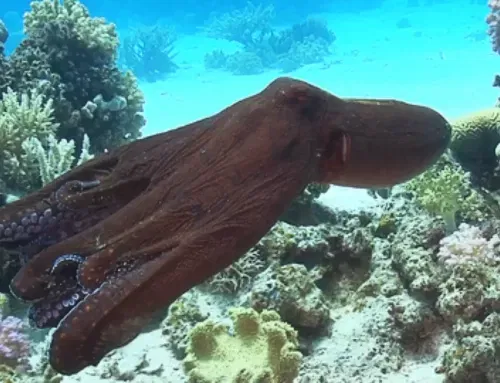How unfair! What an insult to the innocent nose! Strange, isn’t it, that the highly evolved sense of smell has been disparaged by the metaphor of “being nosey.”
Sniff This Out

Lobsters are olfactory predators. They use the short pair of antennae located between the long prominent antennae to suss out their meals. Scientists hope the lobsters’ sophisticated sense of smell holds clues to creating robotic odor sensors to aid in toxic cleanups.
Why drag the nose and smell down to the level of gossip instead of being appreciated as a marvel of evolution? Why suck curiosity to learn into dangerous, muddy quicksand? Elevate your thoughts on smell. Consider the following: bloodhounds sniffing what we can’t sense in search of drugs and other dangers; skunks stinking to protect themselves by an invisible shield; bitches in heat signaling males for reproduction. The ability to smell is not limited to mammals. Did you know birds and lobsters have functional noses? Olfaction is a widespread and powerful sense throughout the animal kingdom. And then there’s the allure of fragrant perfume or the irresistible bouquet of fresh bread. Why has the awesome sense of smell been reduced to being nosey?
Winning by a Nose, the Elephant Takes the Prize!
Then there’s the incredible nose of an elephant – the amazing trunk, truly a miracle of biology. The formidable appendage operates without bones and about 40,000 muscles, compared with about 650 muscles in the entire human body. The elephant trunk muscles are grouped around nasal passages tapering down to a width of about two fingers at most, depending on the species. No wonder the trunk can lift more than 700 pounds.
The trunk for communication and language? Indeed. With all its musculature, the trunk resembles the human tongue (as well as the arms of an octopus) and emits – trumpets – sounds of low to high frequency in various contexts by expelling air for social contact, not gossip.
The trunk is used as a snorkel in water and can inhale up to 10 liters in a single whiff, which it can store. It can grasp large quantities of food in one swoop, as well as use suction to pick up a single, fragile tortilla chip. What versatility! It would be impossible for an elephant to have enough food or water to survive without its trunk.
It’s a Smelly World After All
And finally, I come to smell, for the trunk is a nose, after all. The elephant trunk has about 2000 olfactory receptors, more than any other animal nose. Bloodhounds have about 800 receptors and humans only slightly more than 600. Elephant smell is keen, to say the least; they can sniff out buried landmines and much more. In one test, elephants identified all but one of 97 TNT samples.
Leave it to nature, which doesn’t confuse the nose with being nosey.
Related articles: What’s That Sound?
Photo Credits:
Elephants by Christel Sagniez, Pixabay
Lobster by Erwin Cox, Pixabay






Leave A Comment